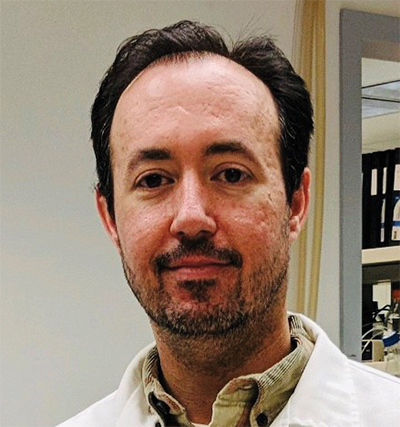Lipoprotein researcher to talk about structure studies
For , the thrill of research comes from standing on the precipice of the unknown.
“There is nothing quite like the feeling of striking gold and getting a new piece of critical data,” he said. “At that very moment, you’re likely the only person in the entire world that knows that biology.”
 John Melchior refined a technique to separate high-density lipoprotein particles based on the presence of certain proteins.
John Melchior refined a technique to separate high-density lipoprotein particles based on the presence of certain proteins.
Melchior researches the structural complexity of high density lipoproteins, or HDL, as a postdoctoral fellow in lab at the . Based on his work, he was selected by the to speak in a special session highlighting up-and-coming researchers at the ͵��͵�� and ͵��͵�� Biology annual meeting.
Melchior said he “fell in love with lipoproteins” during his graduate studies at Wake Forest University, where he was trained in lipid biochemistry. He has continued to study lipoproteins, this time from the protein side. He refined a technique to separate HDL particles based on whether they contain a protein called apoA-II and determined that apoA-II is critical for the positive effects of HDL.
“I found this extremely exciting,” he said. “The logical next steps were to understand the role of apoA-II’s structure in modulating this function.”
His initial attempts to understand the structure of apoA-II were halted when that a previously published crystal structure of the protein was falsified. But Melchior sees what he called an “unfortunate setback” as an opportunity for his structural studies to help fill the gaps of what remains unknown about apoA-II.
Melchior hopes his work will benefit the HDL research community as a whole; for him, this community is almost as important as the research itself.
“I’ve been fortunate to establish relationships with some amazing people who also happen to be excellent scientists,” he said. “I’m really grateful for the community and the friendships that have enriched my life.”
Dissecting the structure of HDL
High density lipoproteins, or HDL, are known as the “good” cholesterol and are thought to decrease risk of heart disease as well as chronic inflammatory diseases. Though commonly thought of as a single number on a patient’s medical chart, HDL is incredibly complex.
The focus of John Melchior’s research is this complexity. He is developing new ways of physically separating subspecies of HDL. Despite their physical similarity, Melchior has been able to isolate very specific subspecies and has found that particles that contain a protein called apoA-II are better at removing cholesterol from cells compared to particles that lack apoA-II. This ability to remove “bad” cholesterol, called the cholesterol efflux property, has been linked to protection against heart disease in several clinical studies.
Melchior’s work could have a direct impact on medical care in addition to contributing to the field of lipid research. The information he gains from understanding the structures of different HDL particles could be used to develop clinical assays that may better identify patients that are at higher risk for heart disease.
Enjoy reading ASBMB Today?
Become a member to receive the print edition four times a year and the digital edition weekly.
Learn moreGet the latest from ASBMB Today
Enter your email address, and we’ll send you a weekly email with recent articles, interviews and more.
Latest in People
People highlights or most popular articles

Transforming learning through innovation and collaboration
Neena Grover will receive the William C. Rose Award for Exemplary Contributions to Education at the 2025 ASBMB Annual Meeting, April 12–15 in Chicago.

Guiding grocery carts to shape healthy habits
Robert “Nate” Helsley will receive the Walter A. Shaw Young Investigator in Lipid Research Award at the 2025 ASBMB Annual Meeting, April 12–15 in Chicago.

Leading the charge for gender equity
Nicole Woitowich will receive the ASBMB Emerging Leadership Award at the 2025 ASBMB Annual meeting, April 12–15 in Chicago.

Honors for de la Fuente, Mittag and De La Cruz
César de la Fuente receives the American Society of Microbiology’s Award for Early Career Basic Research. Tanja Mittag and Enrique M. De La Cruz are named fellows by the Biophysical Society.

In memoriam: Horst Schulz
He was a professor emeritus at City College of New York and at the CUNY Graduate Center in Manhattan whose work concentrated on increasing our understanding of mitochondrial fatty acid metabolism and an ASBMB member since 1971.

Computational and biophysical approaches to disordered proteins
Rohit Pappu will receive the 2025 DeLano Award for Computational Biosciences at the ASBMB Annual Meeting, April 12-15 in Chicago.

